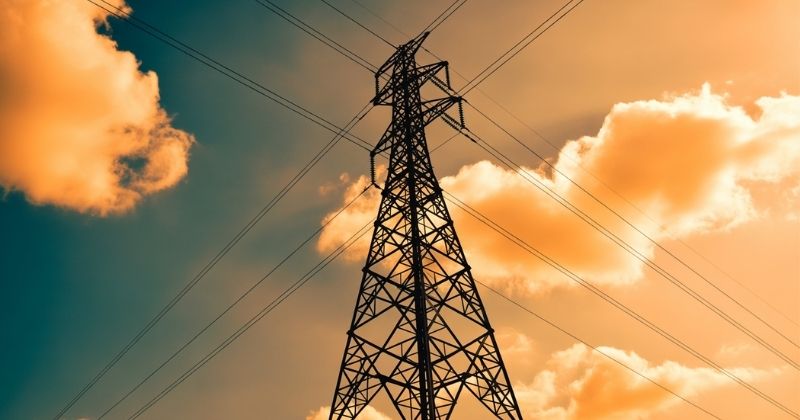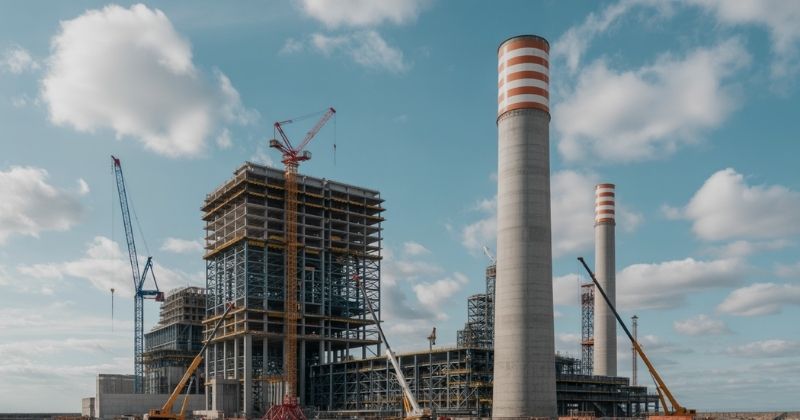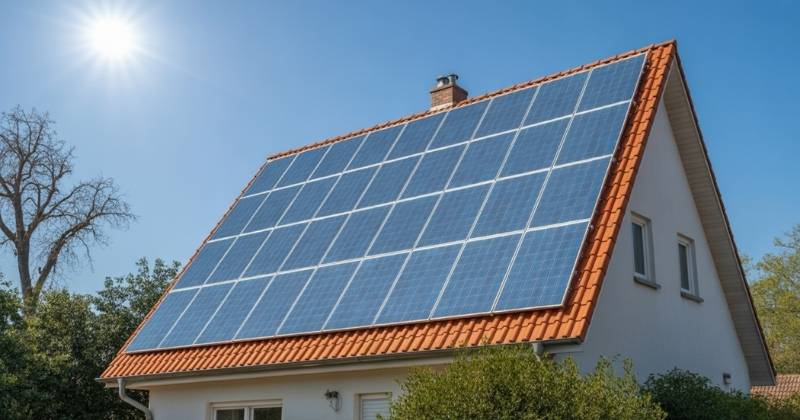
A new in-depth review of Eskom’s electricity demand data reveals that the state utility’s steep 2025 tariff increases are being undermined by a significant decline in customer demand, as South Africans increasingly turn to alternative energy sources. Independent energy specialist Pieter Jordaan’s examination of Eskom’s diurnal demand patterns between June and September 2025 indicates that the price hikes have triggered a noticeable behavioural shift among users.
Key Takeaways
- Tariff Hikes Backfired: Eskom’s steep 2025 price increases have driven customers away instead of boosting revenue, resulting in an 8.7% year-on-year drop in power demand and effectively nullifying the utility’s 12.7% tariff gain in real terms.
- Rise of Alternative Energy: South Africans are rapidly shifting to solar, battery, and gas solutions, creating a new “double duck” demand curve and slashing Eskom’s evening and midday consumption by up to 18% compared with 2019.
- Industrial and Economic Ripple Effects: The absence of the usual post-winter demand surge points to waning industrial activity, while small-scale solar capacity now rivals that of entire European countries, signalling a nationwide energy independence movement.
About Arcadia Finance
Apply with confidence through Arcadia Finance. Access up to 19 verified, NCR-compliant lenders with zero application fees. Enjoy a seamless process designed to match your loan to your financial goals.
The Shrinking ‘Duck’: How Tariffs Reshaped South Africa’s Daily Power Curve
A diurnal demand profile illustrates energy consumption over a full 24-hour period, typically forming what is known as a ‘duck curve’. This pattern reflects higher demand in the morning, a lull during midday, and a sharp peak in the evening. Although this shape has remained broadly consistent over the years, the most recent analysis suggests that the ‘duck’ is shrinking as consumers draw less electricity from the grid.
In energy economics, this shrinking ‘duck’ is a warning sign that it signals not just lower demand, but a fundamental shift in how citizens consume, store, and generate power.
In June 2025, overall demand dropped compared to the same months in 2023 and 2024, primarily following Eskom’s direct tariff adjustments implemented on 1 April 2025. Most of Eskom’s residential users are lower-income, prepaid customers who experienced smaller tariff increases. Additionally, the majority of South African households receive their power through municipal distribution systems and would not have faced new tariffs until 1 July 2025.

Municipal Increases and Tariff Restructuring Deepen the Drop
Although demand in June 2025 showed limited decline following the April increases, Eskom’s demand curve shifted sharply in August and September after the introduction of its Retail Tariff Plan alongside elevated municipal electricity prices. Compared with only three months earlier, September’s figures reflected a dramatic acceleration in the fall in average demand.
Between 2023 and 2024, average demand declined by a modest 1.3%. Yet by September 2025, demand plunged 9.1% year-on-year, from 25.36 gigawatts (GW) in 2024 to just 23.05 GW. Historically, Eskom’s high winter tariffs drop on 1 September, typically followed by an uptick in demand as industrial and agricultural sectors resume activity for the end-of-year production cycle. In 2025, however, this anticipated surge failed to materialise, signalling reduced industrial momentum across several sectors.
A Long-Term Decline in Eskom Dependency
The analysis reveals that electricity usage from Eskom has been consistently falling across every hour of the day, reflecting widespread efforts among South Africans to limit exposure to high grid tariffs and embrace alternative energy systems. When measured against 2019 as a baseline, the 2025 figures show an even more pronounced decline.
By June 2025, midday demand was already 10% (2.9 GW) lower than the pre-pandemic level of 29.75 GW, a sharper decline compared to the 5.5% reduction seen in 2023 and 6.7% in 2024. By September 2025, this midday demand had fallen a striking 18.4% (5.2 GW) below the 2019 baseline of 28.32 GW. This far exceeds the previous declines of 4.9% in 2023 and 6.7% in 2024. Energy modellers say such deep midday reductions point directly to the rise of solar generation, which peaks at noon and slashes Eskom’s sales during its historically strongest hours.
Across the board, the data shows an overall average reduction of 3.4 GW, equating to a 12.9% decrease in September 2025 compared with 2019, and an 8.7% drop year-on-year. The analysis concludes that Eskom’s tariff restructuring effectively triggered 8.7% demand destruction within a single year. When factoring in inflation at roughly 4.5%, Eskom’s average 12.7% tariff increase has effectively been cancelled out in real terms, as revenue growth is offset by reduced consumption. Insiders estimate that this demand destruction may translate into R8–R10 billion in lost annual revenue, money that would have gone toward maintenance, grid expansion, or debt service.

South Africans Turn to Solar, Battery, and Gas
A key shift within the demand curves is the emergence of a second dip in consumption during evening hours. Traditionally, a diurnal electricity profile reflects steady overnight demand from 01:00 to 07:00, a morning surge, a daytime trough between 07:00 and 17:00, and a sharp peak between 17:00 and midnight. This pattern has now changed significantly. Energy hobbyists online even refer to the new shape as “the double duck,” symbolising South Africa’s evolving grid independence.
In recent years, analysts have observed a second, smaller evening trough occurring between 18:00 and 00:00. This new pattern aligns with growing household use of gas for cooking and heating, and with increased reliance on battery power stored earlier in the day from solar systems. These shifts indicate that consumers are not only reducing their dependency on Eskom during daylight hours but are also cutting evening demand through alternative energy sources.
Pro tip: households with battery storage systems of just 5–10 kWh can now comfortably offset up to 60% of their evening power needs, drastically reducing Eskom reliance and monthly bills.
Demand Collapse Follows Successive Price Rises
After stabilising for two years following the pandemic, hovering at around 26 GW, roughly 0.5 GW below earlier levels, Eskom’s demand began sliding further in mid-2023. This new decline, amounting to an additional 1.5 GW, was directly tied to ongoing tariff escalations. The combination of higher prices, tariff restructuring, and private generation growth has rapidly eroded Eskom’s traditional demand base.
In 2024 alone, South Africans imported over R18 billion worth of solar panels and inverters, the highest ever recorded, a telling sign of mass defection from grid dependency.
Renewables on the Rise
At the same time, renewable generation continues to grow steadily. Since 2019, Eskom and its Independent Power Producer (IPP) partners have expanded their installed renewable energy capacity, even as grid consumption declines. Importantly, this upward trend does not yet include the estimated 7.3 GW of privately owned rooftop solar and small-scale renewable installations now operating independently across South Africa. According to energy experts, this untracked capacity could rise above 10 GW by 2026, putting South Africa in the global top 15 for distributed solar generation.
The data paints a clear picture: South Africa’s energy landscape is undergoing a profound transformation. While Eskom’s tariff increases were intended to bolster its financial position, they have instead hastened the migration of consumers toward self-generation, undermining the utility’s revenue base and reshaping the national demand curve for years to come.
Tip for homeowners: with Eskom’s rates climbing faster than inflation, investing in solar-plus-battery setups can pay for itself within five to seven years, faster if paired with energy-efficient appliances.
Conclusion
Eskom’s 2025 tariff strategy has inadvertently accelerated South Africa’s energy transition, as households and industries alike migrate toward self-sufficiency through solar, battery, and gas solutions. What was once a predictable national demand curve has fractured into a landscape of decentralised power generation, eroding Eskom’s dominance and exposing the limits of price-based revenue recovery. With private renewable capacity soaring and grid dependency steadily falling, the utility faces a defining crossroads, adapt to the era of distributed energy or risk being left behind in the country’s accelerating march toward a cleaner, more independent power future.
Fast, uncomplicated, and trustworthy loan comparisons
At Arcadia Finance, you can compare loan offers from multiple lenders with no obligation and free of charge. Get a clear overview of your options and choose the best deal for you.
Fill out our form today to easily compare interest rates from 19 banks and find the right loan for you.



